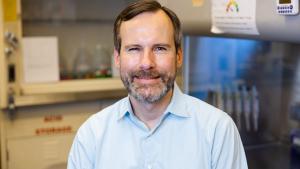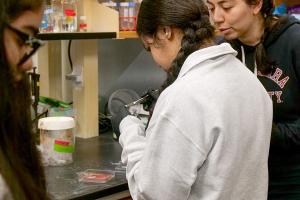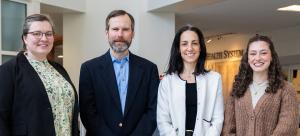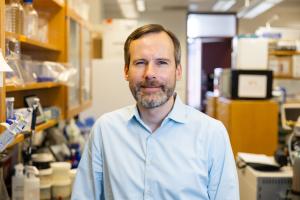Kevin Janes, Ph.D.

About
Kevin Janes is the John Marshall Money Professor of Biomedical Engineering and a Professor of Biochemistry & Molecular Genetics at the University of Virginia. He received his B.S. and B.A. degrees in Biomedical Engineering and Spanish at Johns Hopkins University. He was a Fulbright Scholar at La Universidad de Santiago de Compostela in Spain before attaining his Ph.D. in Bioengineering at M.I.T. Dr. Janes completed a postdoctoral fellowship at Harvard Medical School in the Department of Cell Biology and began his faculty position at the University of Virginia in 2008.
At the University of Virginia, Dr. Janes was recognized as a Pew Scholar, a Packard Fellow, a Kavli Fellow, and a recipient of the NIH Director’s New Innovator Award. He has chaired the Tumor Biochemistry and Endocrinology study section at the American Cancer Society and served on various study sections at the National Cancer Institute. He is a member of the Board of Reviewing Editors for Science Signaling and a member of the Editorial Board for Cell Systems. He co-leads an NIH-sponsored training grants in Systems & Biomolecular Data Science and a U54 Research Center in Cancer Systems Biology. He was elected as a Fellow of the American Institute of Medical and Biological Engineering in 2020.
Education
B.S. Johns Hopkins University, 1999
Ph.D. Massachusetts Institute of Technology, 2005
Post-Doc Harvard Medical School, 2005-2008
"My research combines engineering principles with molecular biology to tackle fundamental problems in cancer and infectious disease."
Research Interests
Selected Publications
LOPACINSKI AB*, SWEATT AJ*, SMOLKO CM, GRAY-GAILLARD E, BORGMAN CA, SHAH M†, JANES KA†. (2021)
Courses Taught
Awards
Grants and Projects
Research in Motion

Kevin Janes, PhD, on combining quantitative experiments and computer models to see how a disease works.


